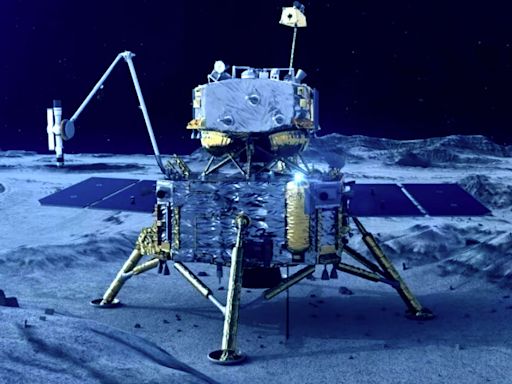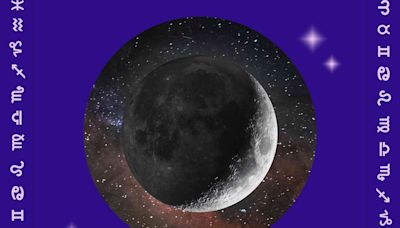Search results
The Moon is Earth 's only natural satellite. It orbits at an average distance of 384,400 km (238,900 mi), about 30 times the diameter of Earth. Tidal forces between Earth and the Moon have over time synchronized the Moon's orbital period ( lunar month) with its rotation period ( lunar day) at 29.5 Earth days, causing the same side of the Moon ...
Overview. Earth's Moon is the brightest and largest object in our night sky. The Moon makes Earth a more livable planet by moderating our home planet's wobble on its axis, leading to a relatively stable climate. It also causes tides, creating a rhythm that has guided humans for thousands of years. The Moon was likely formed after a Mars-sized ...
Explore the moon's surface with Google Moon's interactive maps and detailed imagery.
2 days ago · Moon, Earth’s sole natural satellite and nearest large celestial body. Known since prehistoric times, it is the brightest object in the sky after the Sun.It is designated by the symbol ☽. Its name in English, like that of Earth, is of Germanic and Old English derivation.. The Moon’s desolate beauty has been a source of fascination and curiosity throughout history and has inspired a rich ...
Jul 26, 2018 · What is the moon made of, and how did it form? Learn about the moon's violent origins, how its phases shaped the earliest calendars, and how humans first exp...
The Moon was likely formed after a Mars-sized body collided with Earth several billion years ago. Earth’s only natural satellite is simply called “the Moon” because people didn’t know other moons existed until Galileo Galilei discovered four moons orbiting Jupiter in 1610. In Latin, the Moon was called Luna, which is the main adjective for […]
May 23, 2023 · Seasons. Exploration. The moon is Earth's most constant companion and the easiest celestial object to find in the night sky. The rhythm of the phases of the moon has guided humanity for millennia ...
From your astronaut’s viewpoint, you can see that the Moon is an average of 238,855 miles (384,399 km) from Earth, or about the space that could be occupied by 30 Earths. It travels around our planet once every 27.322 days in an elliptical orbit, an elongated circle. The Moon is tidally locked with Earth, which means that it spins on its axis ...
Sep 7, 2023 · The Moon is Earth’s only permanent natural satellite, and it’s the fifth-largest satellite in our solar system. The Moon’s diameter is approximately 2,160 miles (3,475 kilometers), or about ...
The Moon was likely formed after a Mars-sized body collided with Earth several billion years ago. Earth's Moon is the only place beyond Earth where humans have set foot, so far. Earth's only natural satellite is simply called "the Moon" because people didn't know other moons existed until Galileo Galilei discovered four moons orbiting Jupiter ...




